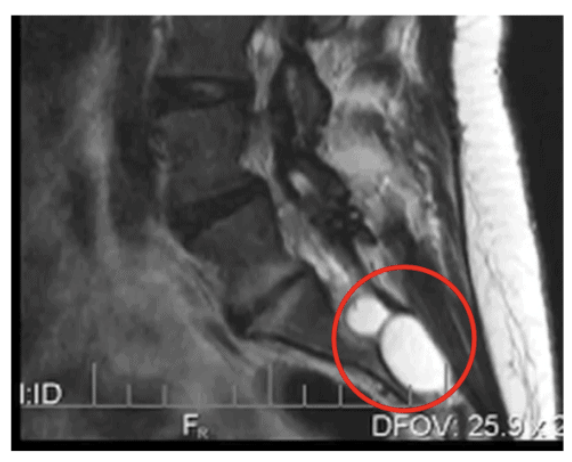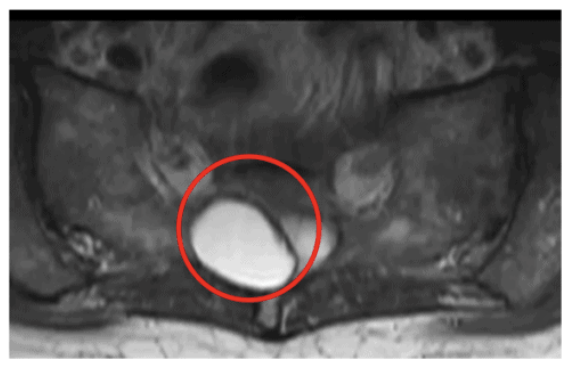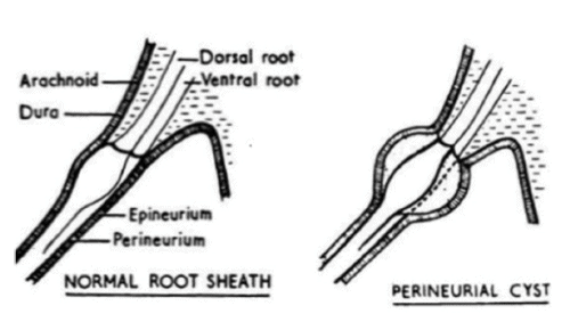Overview
The spine is made up of a column of 33 individual bones, called vertebrae, which are stacked atop one another from the base of the skull to the pelvis. The spinal cord is the nerve center of the body and passes through a tunnel formed by the stacked vertebrae called the spinal canal. It is made up of millions of nerve fibers that branch off to form nerve roots, which exit the spine through small openings on each side of the vertebra. The sacrum (base of the spine and between the hips) is made up of five vertebrae which have fused.
Tarlov Cyst
A tarlov cyst, also called a perineural cyst, is a small sacs of nerve tissue filled with cerebral spinal fluid. Tarlov cysts are found in nerve roots and are most commonly found in the sacral area. In most cases, Tarlov cysts are asymptomatic; however, symptoms can occur depending on the size and specific location of the cyst. Symptoms such as those listed below can worsen over time as the cyst expands in a confined bony space.



Causes
Causes may include trauma to the central nervous system, irritation of the nerve root sheath, weakness in the nerve root sheath from connective tissue disorders, and weakness in the nerve root sheath present from birth.
Symptoms
Symptoms for Tarlov Cysts can include sexual dysfunction such as PGAD, bowel and/or bladder dysfunction, symptoms in the buttocks and legs including pain, numbness, weakness, or tingling.

